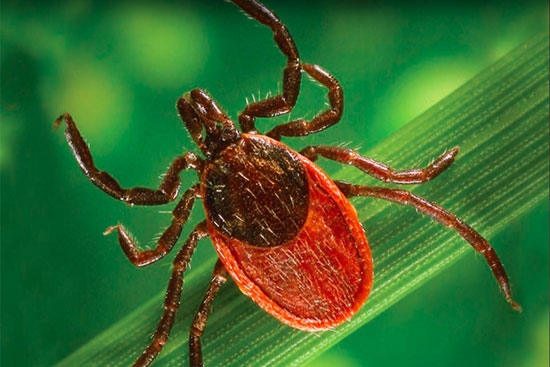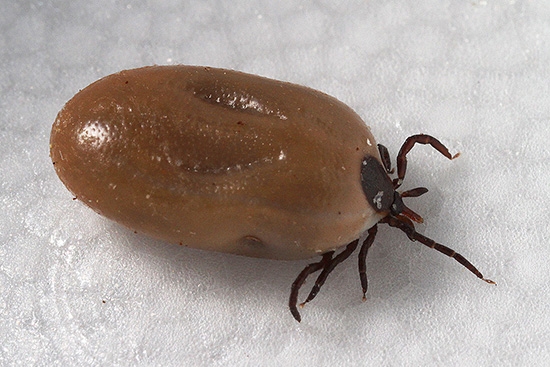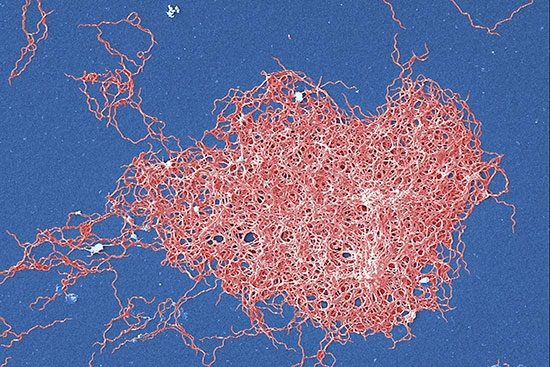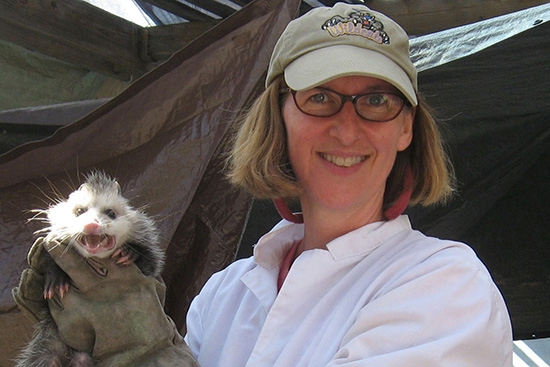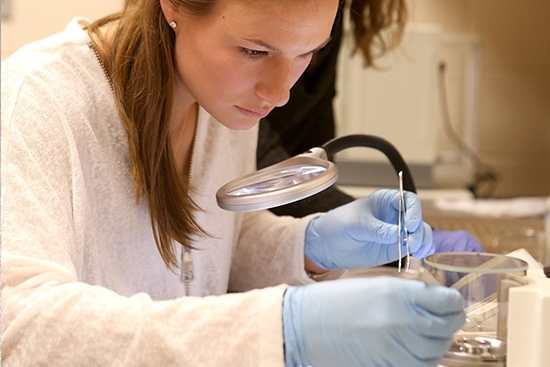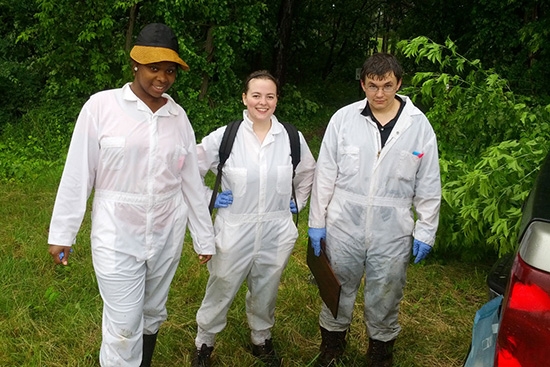When it comes to infectious diseases, it doesn't just take a village. It takes states and nations. It takes a world.
Infectious diseases, or disorders caused by microorganisms, require more interdisciplinary mind-power and collaboration across fields, institutions and borders than most other big issues facing humanity today. Think Ebola. Or more locally in the Northeastern United States, there’s the non-lethal (but still quite serious) Lyme disease.
“Germs are everywhere, some are harmful and some are not. They have routes of transmission — food, water, air, sex, drugs, insects—anything,” said Dr. D. Peter Drotman ’69, editor-in-chief of the Emerging Infectious Diseases journal at the Centers for Disease Control and Prevention. “So to address all these things and minimize risk, you need everybody involved.”
“For example, consider the people who grow the food and wash the dishes, the people who pump water to your house and safeguard the reservoir from contamination or oversee the safety of the water you swim in,” he added. “Everyone from educators to social scientists, to those who study the illness-causing microbes to those who make vaccines—there’s almost no one who doesn’t play a role. This article is playing one now, transmitting information that will make people a little better informed.”
And so it is with Lyme disease, the most commonly reported vector-borne illness in the United States. A vector-borne illness is one transmitted by bloodsucking arthropods like ticks (Lyme) or mosquitoes (Zika, West Nile, malaria).
Here at Union, interdisciplinary collaboration between biology professor Kathleen LoGiudice and economics professor Stephen Schmidt has enhanced understanding of certain aspects of Lyme disease.
Research at Union
Together, the pair quantified the economic value of habitat restoration in the Albany Pine Bush. Their 2012 study specifically investigated whether returning the ecosystem to its natural state would reduce Lyme disease risk in the preserve.
The answer was yes; a fact that correlated with significant savings in health care dollars.
“In general, I work on trying to reduce the impact of infectious diseases on humans and wildlife by learning about the influence of ecology and the environment on pathogen transmission.”
– Kate Langwig ‘08
“The restoration work involved taking a closed-canopy forest, created by invasive black locust trees, and replacing it with native savannah-like vegetation—grasses and low shrubs with the occasional pitch pine,” LoGiudice said. “Blacklegged ticks are animals of the forest. They cannot tolerate drying, the savannah-like habitat is not ideal for them. They thrive instead in areas where soils have a lot of organic matter and less sunlight reaches the forest floor—areas like those created by the locusts.”
Returning the Pine Bush to its mostly open state, however, takes money. Removing invasive vegetation, planting native species and then conducting controlled burns of the land every five years (as demanded by native vegetation that depends on fire) was projected to cost $22.049 million.
But it’s a price tag that seemed to be worth it.
“We saw a 98-percent reduction in ticks in restored areas, which really reduces a person’s chance of being bitten,” Schmidt said. “And the benefits of having people not get Lyme disease, as we measured them, are that the medical resources that would have been spent on their cases can instead go to other patients or be returned to the public via lower health care costs.”
“The cost of treating one case of Lyme works out to $8,568, on average,” he added.
The duo, who also worked with Scott Morlando ’08, used the economic concept of “present value,” which allows calculation of the worth of future costs or benefits in current dollars. So doing the math, they found that averting just one $8,568-case of Lyme this year, next year and every year into the future, is equivalent to saving $294,168 right now.
Taking it further, the researchers calculated that $22.049 million for restoration and maintenance, divided by the $294,168 cost of each Lyme disease case, equals 75. And $294,168 multiplied by 75 equals $22,048,999. That means if just 75 of the 100,000 Pine Bush visitors each year avoid illness, habitat remediation pays for itself in public health benefits.
These numbers, or rather the collaboration with Morlando and Schmidt, really enhanced the overall findings of the study.
“The straight ecology was not surprising, we expected to find fewer ticks and therefore lower disease risk in grasslands,” LoGiudice said. “It would have been unexceptional work without an interdisciplinary student like Scott, who doubled-majored in environmental science and economics, to bring Steve and me together.”
“Our paper grew directly out of Scott’s thesis. I never would have come up with the idea for this project if he hadn’t come to us needing a thesis that combined both his majors,” she continued. “Combining both fields allowed us to learn more than we could have alone. If we had done a straight economics paper or a straight ecology paper, neither would have had the impact they did once we joined them.”
Morlando is equally happy they had the chance to collaborate.
“Working with Steve and Kathleen taught me the importance of understanding the different perspectives, experiences and expertise that people bring to teams,” he said. “The interdisciplinary background has been very helpful to me professionally.
It gives a person practice and experience in viewing problems and issues through different lenses, and allows them to (hopefully) take the best practices from each discipline.”
Morlando, now in Denver, Colo., is a senior consultant for FTI Consulting, Inc., focused on the natural resources space. He helps distressed companies manage liquidity and navigate the bankruptcy process.
Like her former student, LoGiudice also understands the value of looking at problems in different ways and is continually investigating Lyme disease from various ecological angles.
Working with colleagues at the Cary Institute of Ecosystem Studies (Millbrook, N.Y.), for instance, she has contributed to the body of knowledge on Lyme and the animals that ticks feed on. Specifically, they have explored whether the prevalence of infected tick nymphs (young ones most likely to pass Lyme to humans) increases or decreases with the composition of forest fauna.
In the 2009 study, the researchers counted the number of nymphs on animals that commonly inhabit forests
in the Northeast, including opossums, squirrels, white-footed mice and chip-munks. And it turns out certain critters were less tolerant of ticks getting a quick bite to eat than others.
Take opossums.
“Opossums are not very ‘permissive’ hosts and they seem to kill a lot of the ticks that try to feed on them by a mechanism that isn’t entirely clear,” LoGiudice said. “They may groom them off or they may have an immune response that prevents the ticks from feeding or even kills them.”
“What we do know is that only a small fraction of ticks that infest opossums actually get a good blood meal and molt into nymphs,” she continued. “In addition, those that do molt successfully typically are not infected with the Lyme bacterium.”
To be precise, only 3.5 percent of ticks that encountered opossums fed successfully and molted into nymphs. In contrast, almost half of larval (baby) ticks attached to mice and got the meal they needed to grow and enter the nymph stage of development.
So when the researchers used mathematical models to hypothetically remove these two animals from an ecosystem, the density of infected tick nymphs would increase or decrease accordingly.
“Removal of mice from a simulated community always reduced the density of infected nymphs, while removal of opossums increased the density of infected ticks, if ticks that would have fed on opossums were redistributed to remaining hosts,” they wrote in the study.
In fact, the group found that if 33 percent of ticks were redistributed to other animals, the loss of a single opossum resulted in a 15 percent increase in Lyme disease risk.
This investigation into the role of host composition in disease risk is an important one, not only for Lyme but for many infectious diseases (like malaria or dengue). More than 1 million people worldwide die each year of vector-borne illnesses, according the World Health Organization.
But one of the challenges of disease ecology is that findings cannot necessarily be applied from one illness to the next, or even from one region to another dealing with the same disease. There are simply too many variables to ever have a blanket set of rules that can be applied in each situation and each habitat.
Challenges of Infectious Disease Research
“This is especially true with these complex diseases that circulate among wildlife and have so many different hosts,” LoGiudice said. “Even the weather can be a factor, not only potentially affecting tick survival, but also influencing how likely people are to be outside and how likely they are to be in contact with ticks.”
“Ecologists have physics envy,” she added with a chuckle. “In physics, if you drop it, it will fall down. There’s nowhere on earth this isn’t the case. We don’t have those universal laws in ecology.”
Kate Langwig '08 is intimately acquainted with this fact. A postdoctoral fellow in the Department of Epidemiology at Harvard University’s Center for Communicable Disease Dynamics, her research is full of variables that are rarely constant.
“In general, I work on trying to reduce the impact of infectious diseases on humans and wildlife by learning about the influence of ecology and the environment on pathogen transmission,” said Langwig, who counts LoGiudice among her undergraduate mentors. “At Harvard I’m working on a project to make better predictions about the effectiveness of vaccines in diverse communities.”
“We’re trying to build mathematical models to understand why, in a developing country, a vaccine is 30 percent effective, but in an industrialized nation, it’s 80 percent,” she continued. “It’s difficult to encompass the differences that affect vaccine performance in all situations. How much exposure people are getting to mosquitos in urban Brazil will be really different from the number of insects transmitting a disease in rural Africa, for instance.”
It's even more difficult to just plain predict which diseases are going to become problems and when.
Langwig points to Ebola as a recent example. Suspected of first sickening people who may have come into contact with infected wildlife, before being transmitted person-to-person, Ebola is a disease humanity has known about since the 1970s. But it wasn’t until the 2014 outbreak in West Africa that Ebola really started making international headlines in popular media.
“We’ve known about it for 40 years, imagine a disease we don’t know about,” Langwig said. “How do you predict it, how do you prepare?”
This is further complicated by the fact that a pathogen jumping from animals to humans (spillover) appears to be a rare occurrence.
“We don’t really know the probability, but some have estimated it’s 1 in 10 million, or even 1 in 1 billion,” Langwig said. “So mathematically, prediction can be a huge challenge. And it’s compounded by the fact that we don’t know what conditions facilitate spillover, and for most zoonotic diseases, we know so little about the ecology of the pathogens themselves.”
“We don’t know what the natural hosts are, or when pathogen prevalence is highest in the natural community.
We don’t know how the pathogen is transmitted or how long it survives outside its host or which individuals are most likely to be affected,” she added. “Knowing all this is obviously critical for understanding when a disease might spillover, but for the vast majority of pathogens, we don’t have the answers.”
Lyme is an exception to this. Although much remains to be learned—such as the exact causes of the disease’s proliferation—the bacterium responsible for Lyme is known. So are its hosts (e.g. mice and chipmunks) and its transmission path—from animal to tick to human. And antibiotics are effective treatment in the majority of cases.
“Thanks, in part, to work done by Kathleen and colleagues, we have an awesome body of work on the ecology of Lyme,” Langwig said. “This is helped by the fact that Lyme isn’t nearly as rare as some other diseases.”
And at least in the Northeast and upper Midwest, Lyme could even be called common.
“It’s the most reported vector-borne disease in the United States, though it’s highly focused in 14 states,” said Dr. D. Peter Drotman ’69, who before joining the CDC served in the WHO Smallpox Eradication Programme, assisting in the successful eradication of smallpox from Bangladesh. “With around 30,000 cases each year, it’s above all others—malaria, dengue and Zika are not close in numbers. Of course, HIV is way past Lyme. It’s a virus that jumped from primates to humans.”
Whatever the disease, humans need to understand it, and the CDC’s Emerging Infectious Diseases journal is dedicated to making that happen. Edited by Drotman, the open-access publication tackles aspects of infectious disease not covered in clinical journals, which typically offer information on treatment of illnesses. Instead, it focuses on factors involved in disease emergence, prevention and elimination.
“People get very concerned about diseases that emerge, like Ebola, Zika, Lyme, SARS. Our goal is to find these diseases before they become big-time problems—before patients start showing up—and provide information and possibly strategies for preventing them,” Drotman said. “We cover every aspect from veterinary medicine to geographic spread of an illness, to disease ecology and epidemiology to food chain decontamination.”
“Many infectious diseases that emerge come from animals—food chain animals or wildlife,” he added. “Lyme is one of these. It got into areas where people live because some animals adapted very well to suburban life.”
The journal also publishes research that tackles one of the most formidable disease-related challenges the world faces.
“We’re running out of antibiotics, and some bacteria are resistant to nearly all antibiotics we have. Bacteria are evolving faster than we can invent new drugs to kill them,” Drotman said. “So we may need to find an entirely different strategy, something that affects the immune system or more vaccines for the most worrisome bacteria, or something that reverses their resistance to antibiotics.”
This is just one more reason interdisciplinary collaboration is crucial to combating infectious diseases, and not just among immunologists or ecologists or epidemiologists.
“Social scientists of all kinds are very important in this,” LoGiudice said. “Knowledge of human behavior and how to influence it—how to change people’s habits so they’re more aware and less likely to be infected—is huge.”
